Chart Color Schemes
est. as @ -- *
ABS ERP | -- people | --
2021 Census | -- people
Sales Activity
Curious about local property values? Filter the chart to assess the volume and appreciation (including resales) trends and regional comparisons, or scroll to the map below view this information at an individual property level.
Find a Recent Sale
Sales Detail
Population
An assessment of population growth drivers in Tomerong - Wandandian - Woollamia reveals an overall ranking slightly below national averages considering recent, and medium term trends
Based on AreaSearch's analysis, Tomerong - Wandandian - Woollamia's population is around 3794 as of Aug 2025. This reflects an increase of 86 people (2.3%) since the 2021 Census which reported a population of 3708 people. The change is inferred from the estimated resident population of 3789 from the ABS as of June 2024 and an additional 44 validated new addresses since the Census date. This level of population equates to a density ratio of 10.1 persons per square kilometer, providing ample space per person. Tomerong - Wandandian - Woollamia's growth rate of 2.3% since census positions it within 1.1 percentage points of the SA4 region (3.4%), demonstrating competitive growth fundamentals. Population growth for the area was primarily driven by natural growth which contributed approximately 53.5% of overall population gains during recent periods.
AreaSearch is adopting ABS/Geoscience Australia projections for each SA2 area, released in 2024 with 2022 as the base year. For any SA2 areas not covered by this data, AreaSearch utilises NSW State Government's SA2 level projections, released in 2022 with 2021 as the base year. Growth rates by age group from these aggregations are applied to all areas for years 2032 to 2041. Over this period, projections indicate a decline in overall population, with the area's population expected to decrease by 68 persons by 2041 according to this methodology. However, growth across specific age cohorts is anticipated, led by the 85 and over age group which is projected to expand by 107 people.
Frequently Asked Questions - Population
Development
AreaSearch analysis of residential development drivers sees Tomerong - Wandandian - Woollamia recording a relatively average level of approval activity when compared to local markets analysed countrywide
Tomerong-Wandandian-Woollamia has had approximately 14 new home approvals per year. The Australian Bureau of Statistics provides development approval data on a financial year basis, with 70 dwellings approved between the financial years 2020-21 (FY-20) and 2025-26 (FY-25), including three approvals so far in FY-26. Over these five years, an average of 2.2 people have moved to the area per new home constructed. New homes are built at an average construction cost value of $540,000.
In FY-26, there have been $4.8 million in commercial approvals, indicating limited focus on commercial development. Compared to the rest of NSW, Tomerong-Wandandian-Woollamia shows around 62% of the construction activity per person and ranks among the 67th percentile nationally. The area's new building activity consists of 93.0% detached houses and 7.0% townhouses or apartments, maintaining its traditional low density character with a focus on family homes.
With approximately 205 people per approval, Tomerong-Wandandian-Woollamia reflects a low density area. Given stable or declining population forecasts, the area may experience less housing pressure in the future, potentially favourable for buyers.
Frequently Asked Questions - Development
Infrastructure
Tomerong - Wandandian - Woollamia has emerging levels of nearby infrastructure activity, ranking in the 37thth percentile nationally
AreaSearch has identified 46 projects that could impact the area, with key ones including Princes Highway Upgrade from Jervis Bay Road to Hawken Road, Jervis Bay Road and Princes Highway Intersection Upgrade, Jervis Bay Road Intersection Upgrade, and Mixed Use Development with In-Fill Affordable Housing at St Georges Basin. The following list details those likely to be most relevant.
Professional plan users can use the search below to filter and access additional projects.
INFRASTRUCTURE SEARCH
Frequently Asked Questions - Infrastructure
Bay and Basin NSW Ambulance Station
The upgrade and reconfiguration of the Bay and Basin NSW Ambulance Station was delivered as part of Stage 1 of the NSW Government's Rural Ambulance Infrastructure Reconfiguration (RAIR) Program, which provided 24 new or upgraded stations to enhance emergency services in regional and rural NSW. The overall RAIR Stage 1 and 2 program value was $232 million.

Princes Highway Upgrade - Jervis Bay Road to Sussex Inlet Road
A planned 20-kilometre upgrade to the Princes Highway between Jervis Bay Road and Sussex Inlet Road. Stage one, the highest priority, is a 6-kilometre section between Jervis Bay Road and Hawken Road, which will be upgraded to two lanes in each direction with a median barrier to improve safety. Planning is ongoing for future stages. The upgrade aims to improve safety, traffic, and freight efficiency. The project is part of a larger, long-term program to upgrade the Princes Highway between Nowra and the Victorian border.
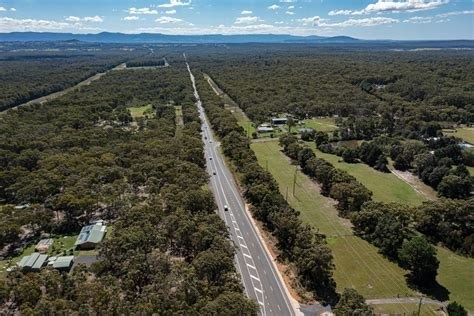
Princes Highway Upgrade - Jervis Bay Road to Hawken Road
Upgrade of a six-kilometre section of the Princes Highway to a four-lane divided highway with a median barrier, connecting to the Jervis Bay Road intersection upgrade. The project includes an upgraded intersection at Hawken Road, service roads, and measures for safety, wildlife connectivity, and reduced environmental impact. It is the first stage of the broader Princes Highway upgrade between Jervis Bay Road and Sussex Inlet Road.
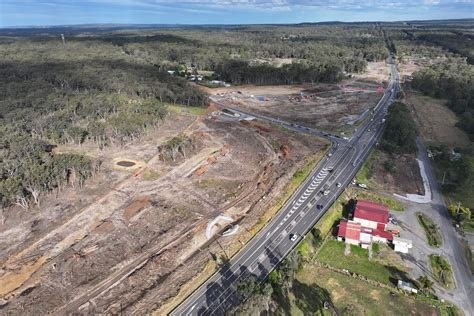
Mixed Use Development with In-Fill Affordable Housing, St Georges Basin
Proposed mixed-use master-planned community precinct featuring 90 dwellings (42 market, 31 affordable rental, and 17 boarding house rooms), 327m2 of non-residential floor space for commercial/retail, co-working space, internal laneways, and a dedicated public pocket park. The development provides 29.5% affordable housing and is a State Significant Development Application (SSD-69683218).
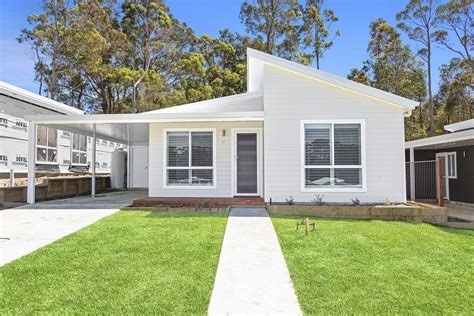
HomeCo Vincentia
Retail centre serving the local community, formerly known as Vincentia Marketplace, now owned and operated by HomeCo. Major tenants include Woolworths and ALDI, along with 31 specialty stores. It features free parking and is a key convenient shopping destination in the Shoalhaven region. The centre's developer was Fabcot.
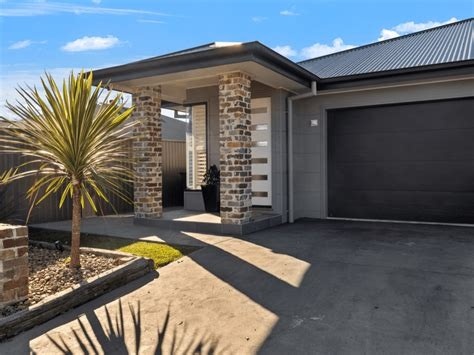
Jervis Bay Road and Princes Highway Intersection Upgrade
Upgrade to the intersection with a grade-separated flyover-style design, including an overpass bridge for highway traffic to safely cross Jervis Bay Road, roundabouts on either side of the highway, two lanes in each direction on Princes Highway approaches, longer entry and exit ramps, and multi-modal facilities to improve safety, reduce congestion, and support tourism and residential growth. Major construction is underway and is expected to take around four years to complete, weather permitting.

Sanctuary Point Library
Shoalhaven City Council is progressing a new district library to replace the outdated existing facility serving the Sanctuary Point and wider Bay and Basin community (30,000+ residents). In April 2025 Council resolved not to proceed with the Kerry Street / Paradise Beach Road site due to parking concerns and directed staff to investigate alternative locations. The project remains in planning with site investigations underway and a rescoped single-storey design concept prepared by Brewster Hjorth Architects.
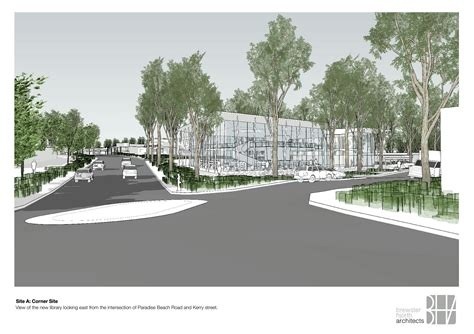
Vincentia Coastal Village - Project Modification 9 and Concept Plan Mod 17
Modification application for the Vincentia Coastal Village Concept Plan (MP06_0060-Mod-17) and the Vincentia District Town Centre Stage 1 project approval (MP06_0025-Mod-9). The modification seeks amendments to staging, land uses, car parking, and a reduction in gross floor area, to include specialty retail, bulky goods, a pet store, a vet, a medical centre, a gym, and a 120-place child care centre. The modification is currently undergoing assessment by the NSW Department of Planning and Environment, with a request for a Response to Submissions issued in November 2022.
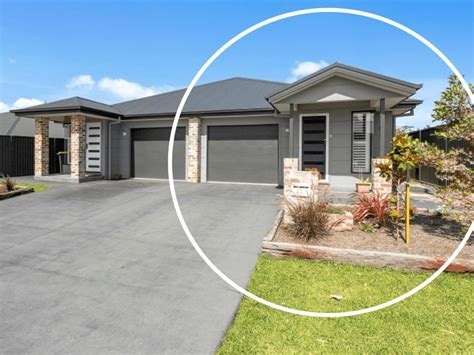
Employment
AreaSearch analysis of employment trends sees Tomerong - Wandandian - Woollamia performing better than 90% of local markets assessed across Australia
Tomerong-Wandandian-Woollamia has a skilled workforce with 1.3% unemployment as of June 2025. Employment growth over the past year was estimated at 2.8%.
The area's unemployment rate is 2.3% below Rest of NSW's rate of 3.7%, with workforce participation similar to Rest of NSW's 56.4%. Dominant employment sectors include construction, healthcare and social assistance, public administration and safety. Construction has an employment share 1.5 times the regional level while agriculture, forestry and fishing shows lower representation at 2.4% versus the regional average of 5.3%. Employment opportunities appear limited locally, with Census working population count lower than resident population.
In the 12-month period ending June 2025, employment increased by 2.8%, labour force by 2.6%, and unemployment fell by 0.2 percentage points. This contrasts with Rest of NSW where employment fell by 0.1%, labour force expanded by 0.3%, and unemployment rose by 0.4 percentage points. State-level data to Sep-25 shows NSW employment contracted by 0.41% (losing 19,270 jobs), with a state unemployment rate of 4.3%. National employment forecasts from May 2025 project national growth at 6.6% over five years and 13.7% over ten years. Applying these projections to Tomerong-Wandandian-Woollamia's employment mix suggests local growth of approximately 6.2% over five years and 12.9% over ten years, though this is a simple extrapolation for illustrative purposes only.
Frequently Asked Questions - Employment
Income
The economic profile demonstrates above-average performance, with income metrics exceeding national benchmarks based on AreaSearch comparative assessment
AreaSearch's latest postcode level ATO data for financial year 2022 shows Tomerong - Wandandian - Woollamia had a median taxpayer income of $54,087 and an average of $68,179. Nationally, the median was lower at $49,459 with an average of $62,998. By March 2025, estimates based on Wage Price Index growth suggest a median income of approximately $59,820 and an average of $75,406. Census 2021 data ranks Tomerong - Wandandian - Woollamia's household, family, and personal incomes modestly between the 33rd and 48th percentiles. The predominant income cohort spans 33.8% of locals (1,282 people) in the $1,500 - 2,999 category, similar to regional trends at 29.9%. After housing costs, residents retain 86.9% of their income, reflecting strong purchasing power and the area's SEIFA income ranking places it in the 5th decile.
Frequently Asked Questions - Income
Housing
Tomerong - Wandandian - Woollamia is characterized by a predominantly suburban housing profile, with above-average rates of outright home ownership
In Tomerong-Wandandian-Woollamia, as per the latest Census, 99.0% of dwellings were houses, with the remaining 0.9% comprising semi-detached homes, apartments, and other types. This is in contrast to Non-Metro NSW's dwelling structure, which was 87.8% houses and 12.2% other dwellings. Home ownership in Tomerong-Wandandian-Woollamia stood at 48.8%, similar to Non-Metro NSW, with mortgaged properties accounting for 41.7% and rented dwellings making up 9.5%. The median monthly mortgage repayment in the area was $2,000, surpassing Non-Metro NSW's average of $1,733. Weekly rent median stood at $335, lower than Non-Metro NSW's figure of $350. Nationally, Tomerong-Wandandian-Woollamia's mortgage repayments were higher than the Australian average of $1,863, while rents were notably below the national figure of $375.
Frequently Asked Questions - Housing
Household Composition
Tomerong - Wandandian - Woollamia features high concentrations of family households, with a higher-than-average median household size
Family households constitute 81.1% of all households, including 35.0% couples with children, 38.3% couples without children, and 7.1% single parent families. Non-family households comprise the remaining 18.9%, with lone person households at 17.2% and group households making up 1.6%. The median household size is 2.7 people, which is larger than the Rest of NSW average of 2.3.
Frequently Asked Questions - Households
Local Schools & Education
Tomerong - Wandandian - Woollamia shows below-average educational performance compared to national benchmarks, though pockets of achievement exist
The area faces educational challenges, with university qualification rates at 19.3%, significantly lower than the NSW average of 32.2%. This presents both a challenge and an opportunity for targeted educational initiatives. Bachelor degrees are most common at 12.5%, followed by postgraduate qualifications (3.9%) and graduate diplomas (2.9%). Trade and technical skills are prominent, with 47.3% of residents aged 15+ holding vocational credentials – advanced diplomas (11.3%) and certificates (36.0%).
Educational participation is high at 28.0%, including primary (10.6%), secondary (8.1%), and tertiary education (3.0%). Tomerong-Wandandian-Woollamia has three schools with a combined enrollment of 174 students, demonstrating typical Australian school conditions (ICSEA: 969) with balanced educational opportunities. The educational mix includes two primary schools and one K-12 school. Limited local school capacity (4.6 places per 100 residents vs 12.8 regionally) means many families travel to nearby areas for schooling.
Frequently Asked Questions - Education
Schools Detail
Nearby Services & Amenities
Transport
Transport servicing is low compared to other areas nationally based on assessment of service frequency, route connectivity and accessibility
Tomerong-Wandandian-Woollamia region has 134 active public transport stops. These are served by a mix of bus routes totalling 33. The services provide 441 weekly passenger trips collectively.
Residents' accessibility to transport is rated good, with an average distance of 326 meters to the nearest stop. Service frequency averages 63 trips per day across all routes, equating to approximately 3 weekly trips per individual stop.
Frequently Asked Questions - Transport
Transport Stops Detail
Health
Health performance in Tomerong - Wandandian - Woollamia is lower than average with common health conditions somewhat prevalent across both younger and older age cohorts
Tomerong-Wandandian-Woollamia faces significant health challenges with common health conditions prevalent across both younger and older age cohorts. Approximately 54% (~2037 people) have private health cover, compared to 49.3% across Rest of NSW.
The most common medical conditions are arthritis (11.1%) and mental health issues (8.4%). 64.8% declare themselves completely clear of medical ailments, higher than the 59.4% in Rest of NSW. There are 23.5% residents aged 65 and over (889 people), lower than the 27.8% in Rest of NSW. Health outcomes among seniors are above average, outperforming the general population in health metrics.
Frequently Asked Questions - Health
Cultural Diversity
Tomerong - Wandandian - Woollamia is considerably less culturally diverse than average when assessed alongside AreaSearch's national rankings for language and cultural background related metrics
Tomerong-Wandandian-Woollamia, as of the 2016 Census, showed below average cultural diversity with 90.1% of its population being Australian citizens and 87.2% born in Australia. English was spoken exclusively at home by 95.3%. Christianity was the predominant religion, practiced by 51.0%, compared to 52.6% across Rest of NSW.
The top three ancestral groups were Australian (32.4%), English (32.4%), and Scottish (7.6%). Notably, Maltese (1.0%) and French (0.6%) were overrepresented compared to regional averages of 0.6% and 0.4%, respectively, while Dutch (1.5%) was slightly above the regional average of 1.1%.
Frequently Asked Questions - Diversity
Age
Tomerong - Wandandian - Woollamia hosts an older demographic, ranking in the top quartile nationwide
Tomerong - Wandandian - Woollamia has a median age of 46, which is older than Rest of NSW's figure of 43 and significantly higher than the national norm of 38. The 55-64 age group constitutes 15.3%, compared to Rest of NSW, while the 25-34 cohort makes up 9.5%. Post-2021 Census data indicates that the 15-24 age group has grown from 10.5% to 13.3%, and the 75-84 cohort has increased from 6.0% to 7.5%. Conversely, the 55-64 cohort has declined from 17.5% to 15.3%, and the 5-14 group has dropped from 12.4% to 10.8%. By 2041, Tomerong - Wandandian - Woollamia is expected to see notable shifts in its age composition. The 85+ group will grow by 123%, reaching 179 from 80, leading the demographic shift. Those aged 65 and above will comprise 50% of projected growth, indicating an aging population dynamic. Conversely, population declines are projected for the 65-74 and 45-54 cohorts.






